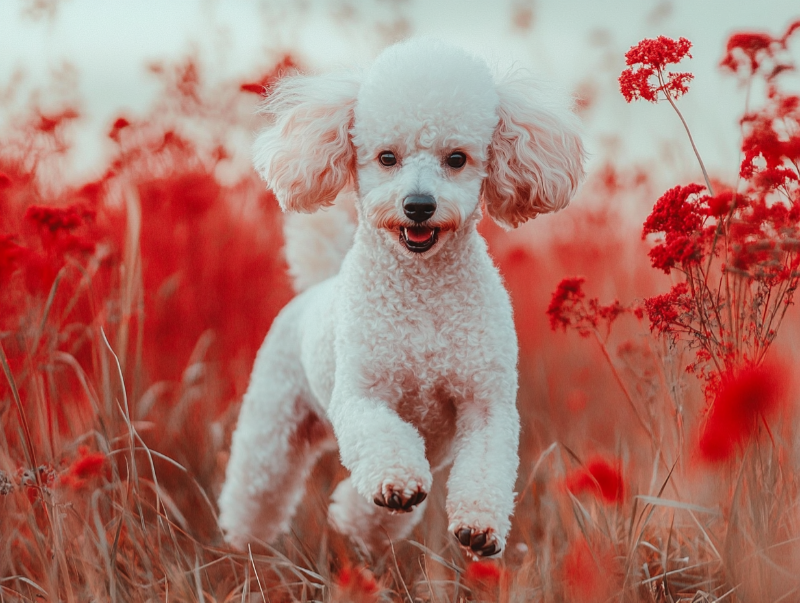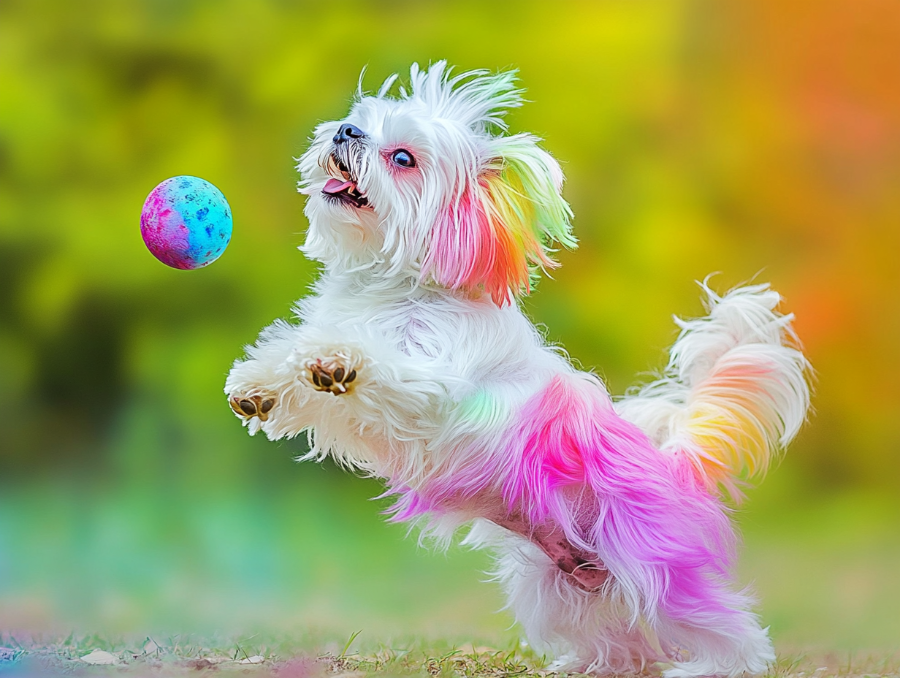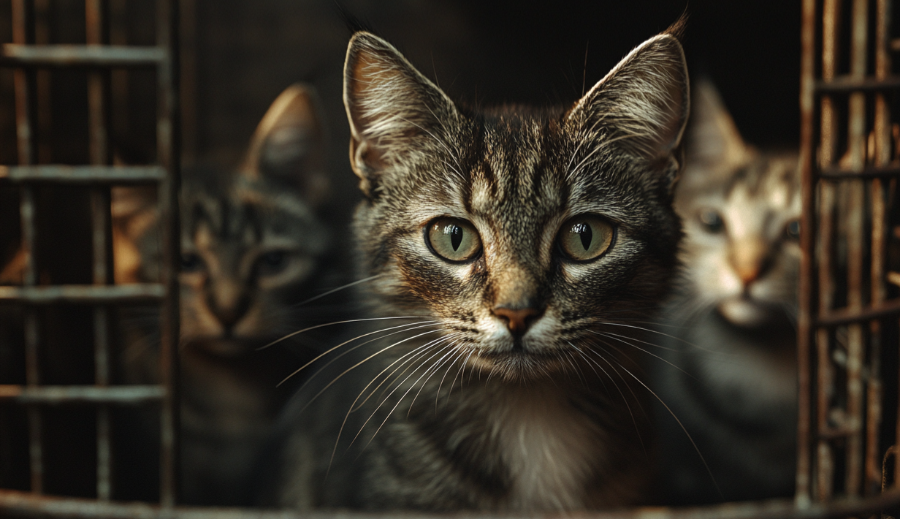Here are some natural dyes you can make at home that are pet-safe for coloring your dog’s fur. These dyes are created using natural ingredients, which means they are free from harmful chemicals, making them a safer choice for your pet:

1. Beet Juice (For Red/Pink Tones)
Beet juice is a fantastic, non-toxic dye that can create a soft pink or red hue on your pet’s fur. It’s gentle and safe for pets, and it’s rich in antioxidants.
- How to Use:
- Juice a fresh beetroot.
- Apply the juice to your dog’s fur, and leave it for a few minutes.
- Rinse thoroughly with water.
- Keep in mind, beet juice may stain, so make sure to use it in an area that’s easy to clean.
2. Turmeric (For Yellow/Gold Tones)
Turmeric is a well-known natural dye, often used to add a beautiful golden or yellow tint. It’s non-toxic, but be cautious because it can stain fabrics and surfaces.
- How to Use:
- Mix turmeric powder with water to form a paste.
- Apply the paste evenly to your dog’s fur.
- Leave it on for 5-10 minutes.
- Rinse thoroughly with warm water.
- Note: Turmeric might temporarily stain fur, but it’s safe for pets.
3. Spinach (For Green Tones)
Spinach leaves contain chlorophyll, which can create a soft green hue. This dye is completely pet-safe and can be used to color fur or as a natural rinse.
- How to Use:
- Blend fresh spinach with water to make a juice.
- Apply the spinach juice to your dog’s fur.
- Let it sit for 5-10 minutes, then rinse thoroughly.

4. Carrot Juice (For Orange Tones)
Carrot juice can provide a bright orange color for your pet’s fur. It’s rich in beta-carotene and other nutrients, which are safe for pets.
- How to Use:
- Juice fresh carrots.
- Apply the juice to your dog’s fur.
- Allow it to sit for a few minutes before rinsing with warm water.
- Rinse well to avoid staining.
5. Blueberries (For Purple/Blue Tones)
Blueberries can create a cool, purple or blue hue, making it a fun option for coloring. They are high in antioxidants and are safe for pets to use.
- How to Use:
- Mash fresh blueberries into a puree.
- Apply the puree to your dog’s fur.
- Leave it for a few minutes and rinse thoroughly.
- Blueberries may cause temporary stains on light-colored fur, so be cautious.
6. Avocado Skin (For Brown/Light Tan Tones)
Avocado skins contain natural pigments that can create a subtle brown or tan color on fur. Plus, they are safe and gentle for your pet’s skin.
- How to Use:
- Boil avocado skins in water to extract the dye.
- Strain the liquid and allow it to cool.
- Apply the cooled liquid to your dog’s fur, leave it for 10-15 minutes, and then rinse.
7. Chamomile Tea (For Light Yellow/Golden Tones)
Chamomile tea has natural bleaching properties and can create a soft golden tint on fur, especially for lighter-colored dogs.
- How to Use:
- Brew a strong cup of chamomile tea and let it cool.
- Apply the tea to your dog’s fur using a spray bottle.
- Let it sit for 10-15 minutes before rinsing.
8. Hibiscus Flowers (For Red or Pink Tones)
Hibiscus flowers can be used to create a rich, vibrant red or pink color. This natural dye is non-toxic and works well on both light and dark fur.
- How to Use:
- Boil dried hibiscus flowers in water to extract the dye.
- Once it cools, apply the liquid to your dog’s fur.
- Let it sit for 10 minutes before rinsing.

Tips for Dyeing Your Pet’s Fur Naturally:
- Patch Test: Always perform a patch test on a small area of your dog’s fur to make sure they don’t have any allergic reactions.
- Stay Supervised: Keep an eye on your pet during the process, and make sure they don’t lick the dye off.
- Avoid Sensitive Areas: Avoid using dye near your pet’s eyes, mouth, and genital area to prevent irritation.
- Rinse Thoroughly: Always rinse your pet’s fur thoroughly after the dyeing process to ensure no residue is left behind.
By using these natural dyes, you can safely add some color to your dog’s fur without worrying about the harmful chemicals often found in commercial pet dyes. If you want to explore more pet-safe options, consider checking out other homemade dye recipes and safety tips!






Pingback: The Hidden Dangers of Commercial Dog Dyes: What You Should Know – PSouls